Scuba Diving With Sea Lions: Discover the World's Most Playful Marine Animal
If you're a diving enthusiast, interacting with sea lions is an experience that should be at the top of your bucket list. These beautiful mammals guarantee a show, swimming loops around you and even coming up to nibble at your bubbles. Interacting with sea lions makes traveling to dive sites far around the world worth the long trip. From rocky outcroppings in the middle of the Sea of Cortez to exotic islands in the South Pacific, here are seven places to dive with these charismatic and daringly friendly creatures:

Shutterstock.com/wildestanimalLos Isolotes is renowned for it’s population of playful sea lions.
Los Islotes, Mexico
From the marina of La Paz, Mexico, it is an hour speedboat journey to the UNESCO World Heritage site, Espiritu Santo. One of the imposing islands in the destination, Los Islotes, houses a sea lion colony of 500: a combination of males, females and juvenile mammals and the largest sea lion colony in the Baja Californias. Book one of several dive shops in La Paz and they will anchor in a prime location next to the island. Once you descend, interact with the playful pups that will nibble your hand, fins, cameras, and peck at your hair. You may also encounter thousands of sardines swarming around you as well as colorful sergeant majors and parrotfish. Note that the dive site is closed June through August to respect the safety of the sea lions’ mating season.
Related Reading: Six Awesome Animal Encounters in Mexico’s Baja Sur
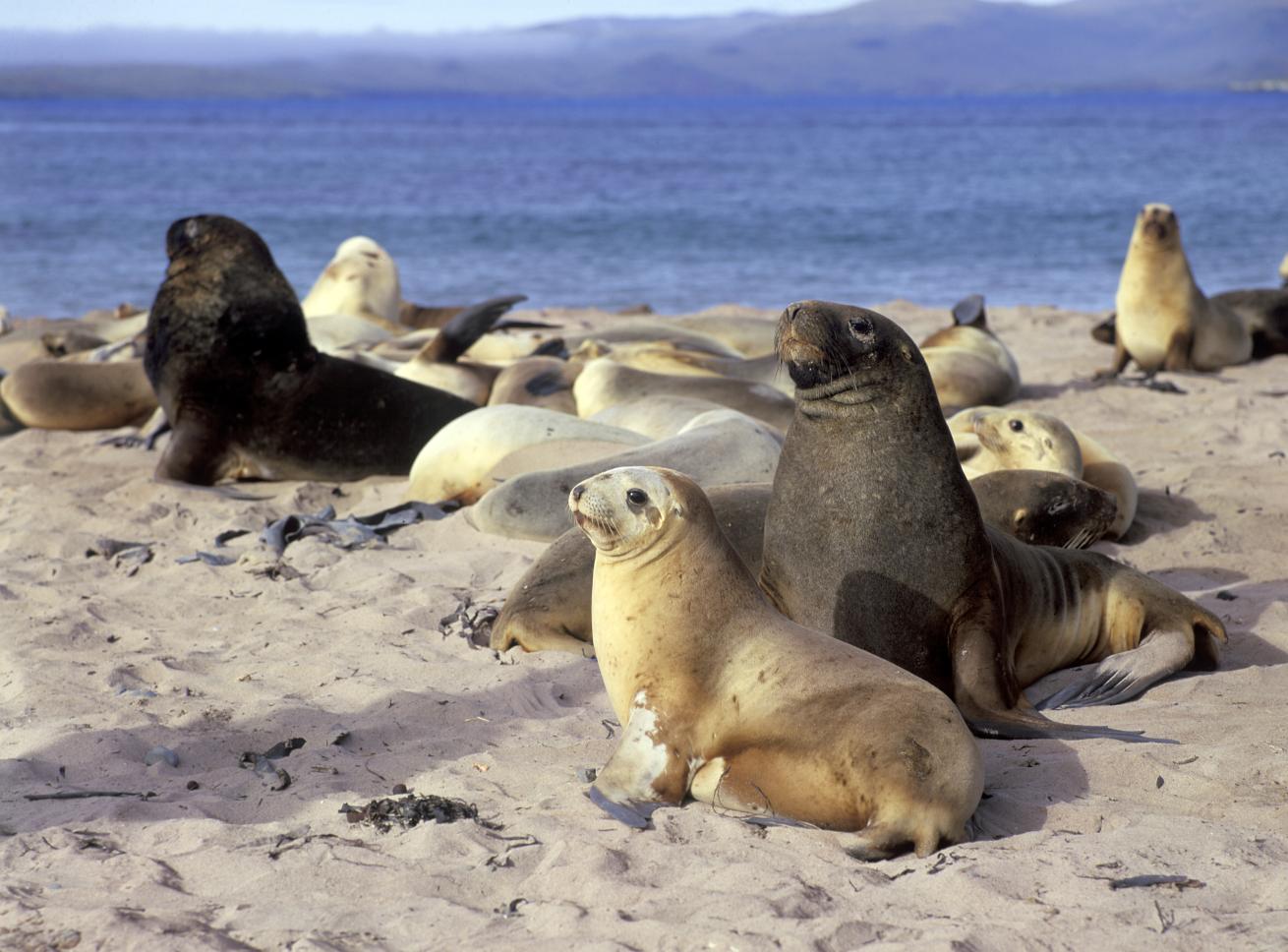
Shutterstock.com/[John Carnemolla](https://www.shutterstock.com/g/carnemolla)New Zealand sea lions, once known as Hooker sea lions. is endemic to mainland and subantarctic New Zealand.
South Island, New Zealand
The New Zealand sea lion is one of the rarest species of sea lion due to being almost eradicated by Māori hunters in the 1700s. Luckily, numbers are recovering and colonies are now well established at the Caitlins and Otago Peninsula. The mammals frequent the coast of the South Island from Kaikoura all the way down to Dunedin. Both destinations offer organized diving tours to get up close to sea lions during the months of October through May, the spring and summer seasons in New Zealand.
Play With Caution
It’s important to keep in mind that no matter the location, keep your distance and don’t make eye contact with the males (distinguished by their size and bump on their foreheads) as they will consider you a threat.
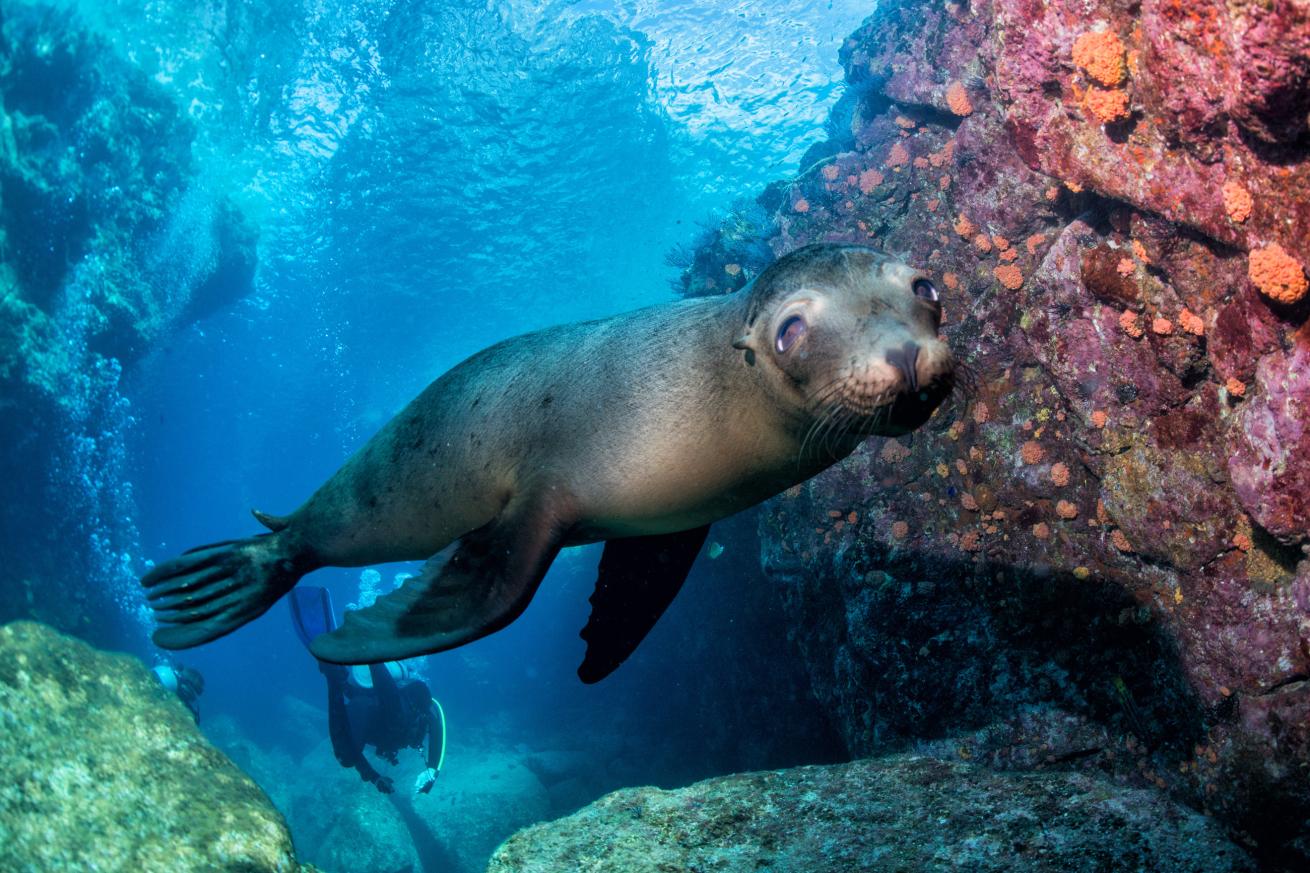
Shutterstock.com/AndreaIzzottiA diver watches as a Galapagos sea lion swims by.
Leon Dormido, Galapagos Islands
The sea lion population in the Galapagos is estimated to be around 50,000 with the pups born during the Garua season from June through November. Boating 10 miles from the capital of Galapagos, Baquerizo Moreno, you arrive at the island of Leon Dormido, one of the most photographed places in the archipelago. Here you can find a large sea lion colony, where there is a good chance pups will get up close and personal with you during your dive. Also keep an eye out for other impressive marine life including sharks, rays, turtles and endemic birds like the Galapagos duck and the blue-winged teal.
Related Reading: The Charismatic Animals You Can Only Dive With in the Galapagos
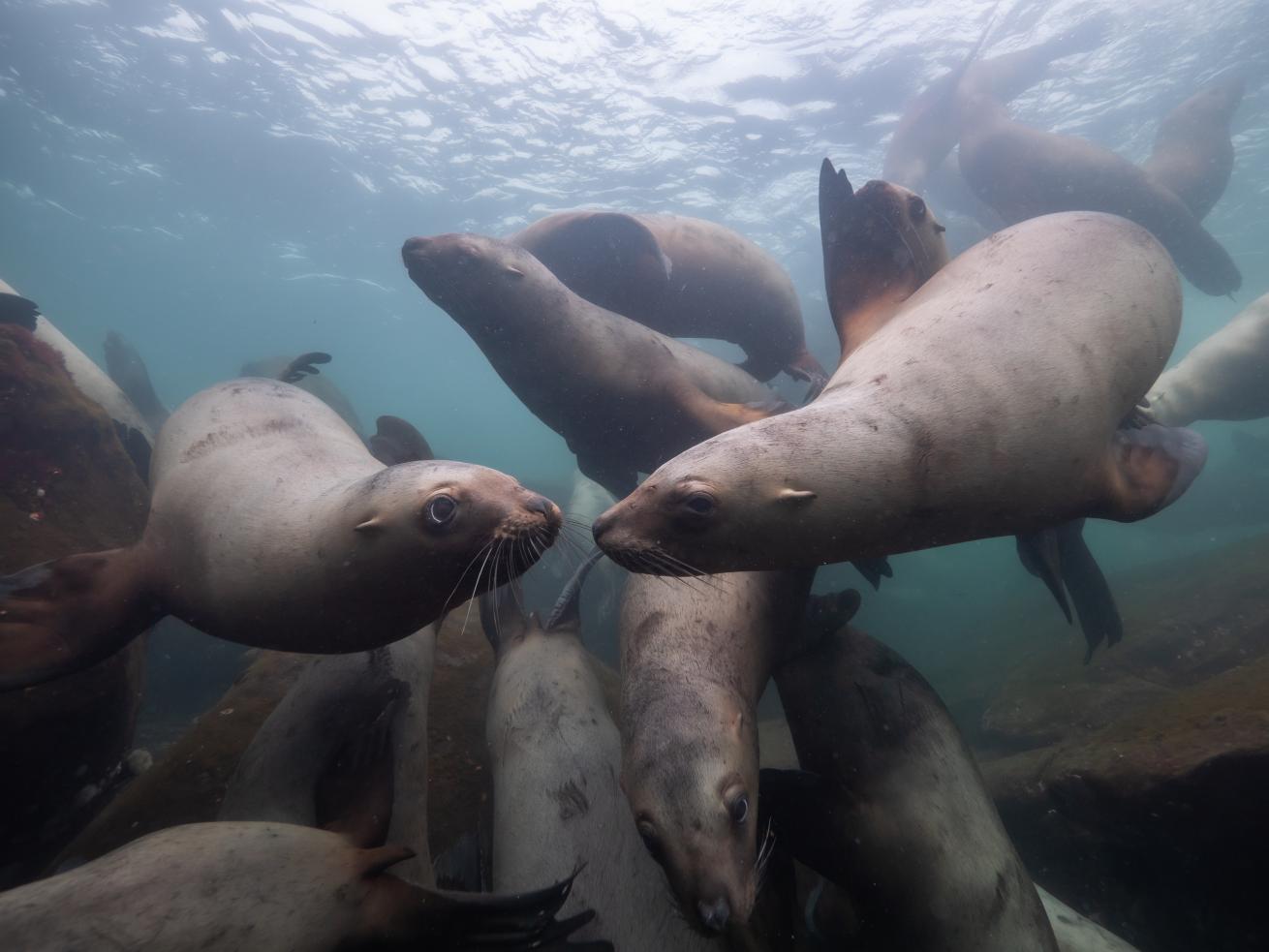
Shutterstock.com/WilliamDrummPlayful Steller sea lion (Eumetopias jubatus) underwater near Hornby Island, British Columbia, Canada.
Hornby Island, British Columbia
Divers that love cold waters should head to Hornby Island, British Columbia, a fascinating place to see sea lions during the winter. The species of Steller sea lions are known to accelerate to speeds up to 30 knots. Even with their size and speed, they are not violent, but they can be very cheeky and may nibble and tug on your gear when you’re not looking. This is a great experience for novice divers, as dive operators use an anchor for every dive for easy entry and exit.
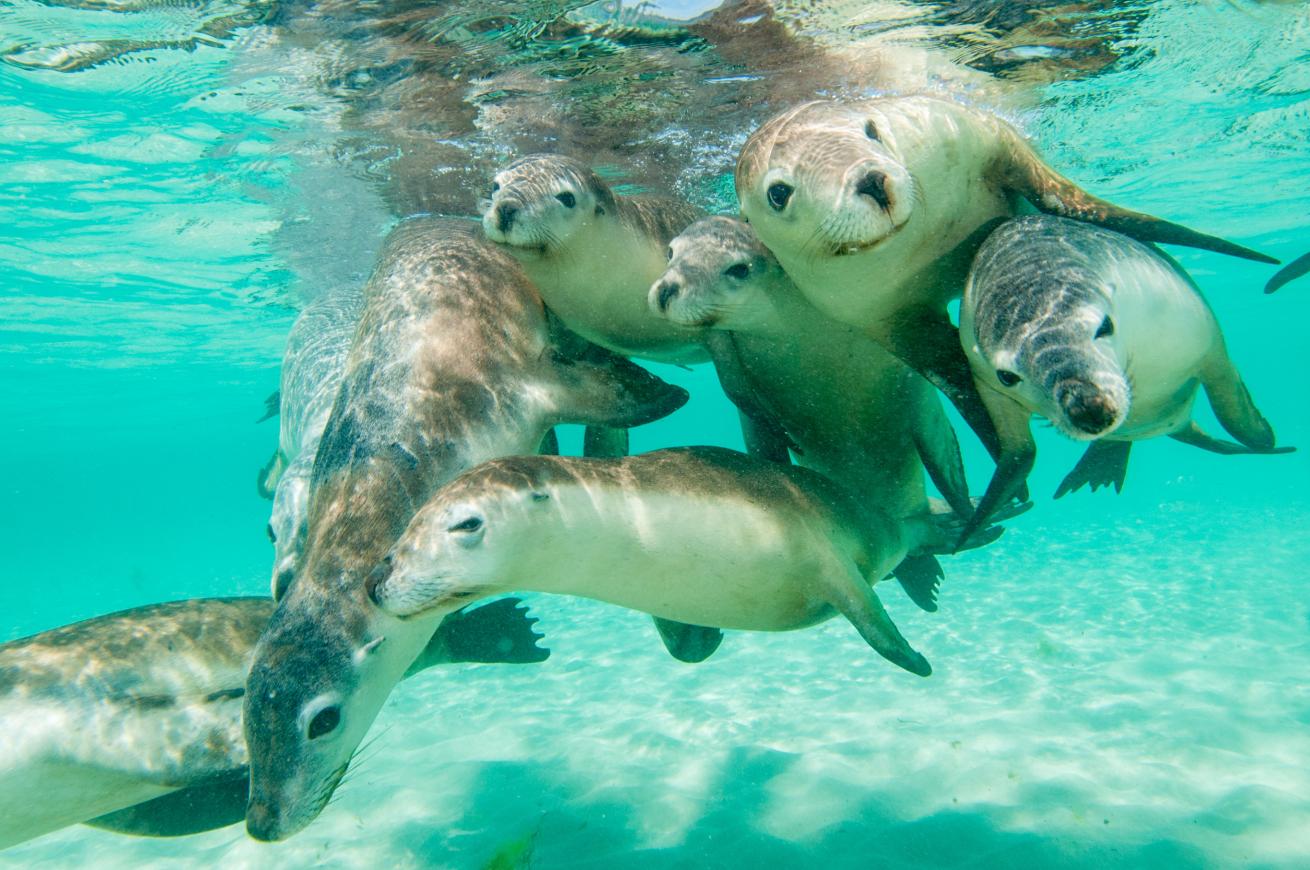
Shutterstock.com/Imagine Earth PhotographyOften called the puppies of the sea, these Australian sea lions sure aren't shy!
Hopkins Island, Australia
Located in South Australia, Hopkins Island is home to a population of Australian sea lions and with 15,000 individuals left in the world, they are one of the rarest species. With 80% of species found in South Australia, you can dive with these lions in abundant numbers at the Seal Cove dive site. Keep an eye out for other local fauna on the shark tooth-shaped island like little penguins and the short-tailed shearwater.
Related Reading: Sea Lions Use Whiskers Like Humans Use Fingertips, Scientists Find
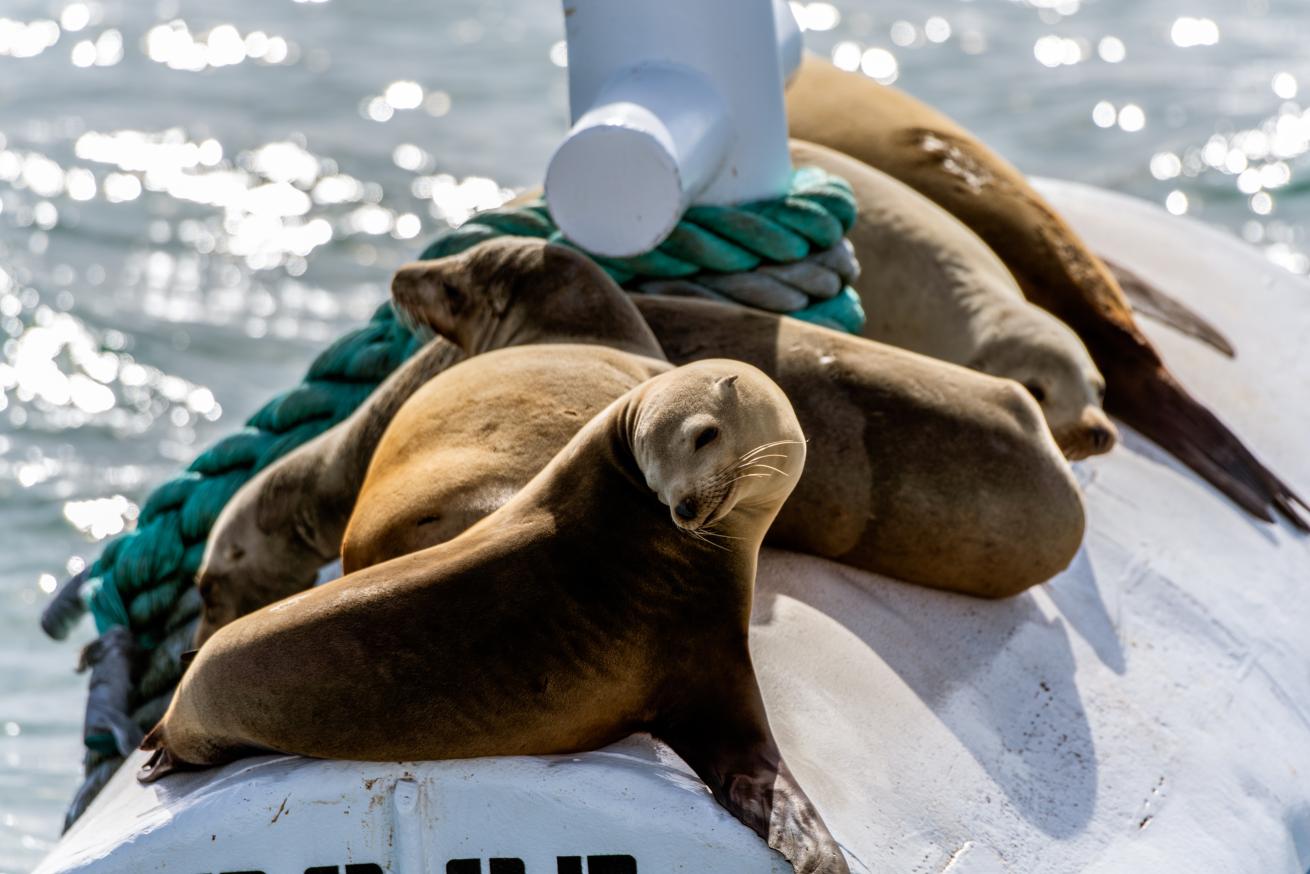
Shutterstock.com/[Jon Osumi ](https://www.shutterstock.com/g/Jon+Osumi)Sea lions lay on a boat in Santa Barbara, California.
Santa Barbara Island, California
Planted in the California Channel Islands, Santa Barbara is the smallest of five islands and is situated 44 miles from Redondo Beach. The population of sea lions at dive sites like Shag Rock and Landing Cove are mainly females and pups that are known to dive bomb in front of you and playfully blow bubbles. A wetsuit is recommended if visiting as the water temperatures can swing between 50F and 60F throughout the year.
Related Reading: How to Dive Lobos Rocks in Monterey Bay
Loreto, Mexico
In the middle of the Baja California peninsula, the town of Loreto is home to the first mission of the Californias as well as the Loreto Bay National Park, comprised of five islands that became a UNESCO World Heritage Site in 2005. From the marinas of Loreto, you can book a dive charter out to one of those islands, Coronado, a volcanic landmass with rocky wall structures and crevices containing around eight dive sites. Coronado is home to a population of all male sea lions but it’s their pups that will swim and play around you. This island also allows the chance to see angelfish, parrotfish and pufferfish.










